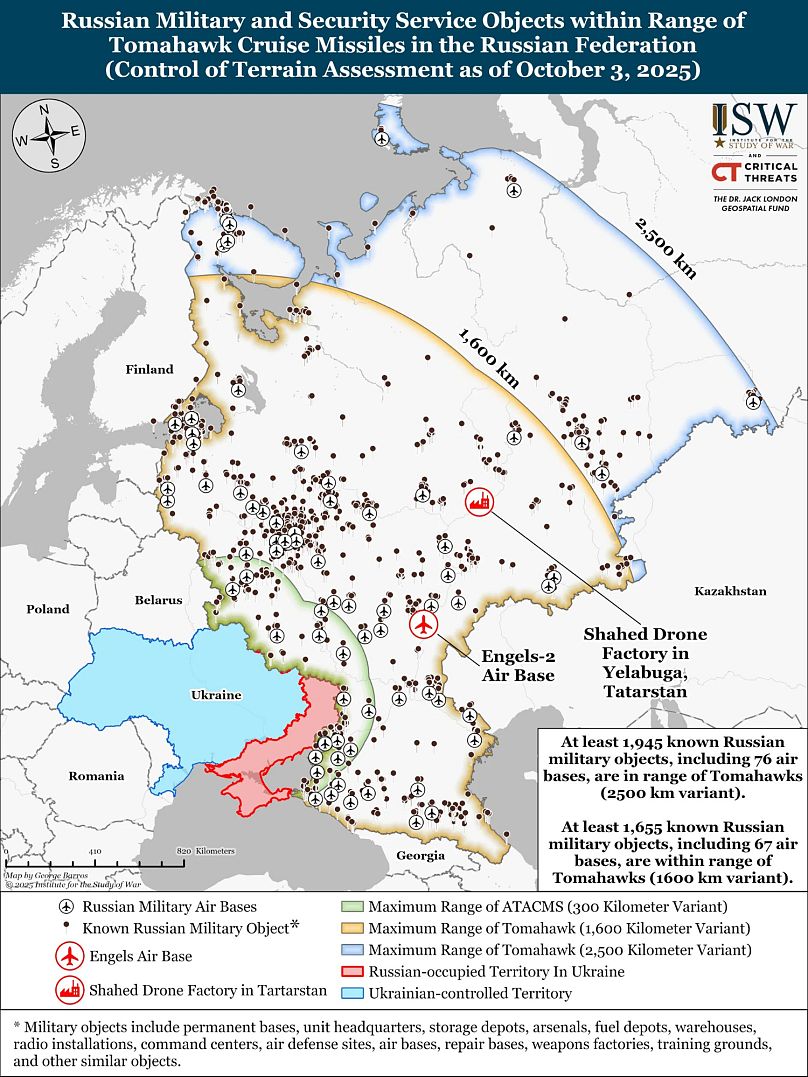The US president said on Monday he has "sort of made a decision" on sending Tomahawk missiles to Ukraine as the impatience grows at the White House over Russia’s refusal to participate in direct talks with Kyiv aimed at putting an end to Moscow’s ongoing all-out war.
US President Donald Trump said on Monday he is close to deciding on whether to supply Ukraine with Tomahawk long-range missiles, adding that he wanted to see the target list first.
"I sort of made a decision pretty much. I think I want to find out what they're doing with them, where they're sending them, I guess. I have to ask that question," Trump said.
The US president also told the reporters at the Oval Office he was not "looking to see escalation."
Ukraine has been requesting the Tomahawk missiles for some time, as Ukrainian President Volodymyr Zelenskyy reportedly asked Trump to provide Kyiv with these missiles during their meeting on the sidelines of the UN General Assembly in New York last month.
Kyiv believes Tomahawks would give Ukraine the ability to strike further deep into Russia, potentially reaching as far as Moscow, something alluded to by Zelenskyy in a recent interview.
“They will have to know where the bomb shelters are”, Zelenskyy said, referring to the Kremlin officials. “They have to know that we in Ukraine will answer. If they attack us, we will answer them”.
Ukraine’s president also recently said that additional weapon systems could prompt Russian President Vladimir Putin to engage in direct talks with Ukraine’s president, following Trump's initiative.
How can Ukraine use the Tomahawks?
With an operational range between 1,600 and 2,500 kilometres and a powerful warhead of around 400-450 kilograms, Tomahawk missiles could reinforce Ukraine’s strikes deep into Russia.
A key part of the US arsenal, they can fly at low altitudes, perform evasive manoeuvres, and be reprogrammed mid-flight.
For the moment Ukraine relies on Western-supplied missiles, such as Storm Shadow, which are limited in range by approximately 250 kilometres.
For anything further than this, Kyiv is utilising its domestically produced drones and drone-like missiles, such as the Palianytsia, but their warhead payload is limited to 50-100 kilograms.
Ukraine will most likely use Tomahawks to target Russia’s military sites, logistics, air defence systems and military airfields, like the Olenya air base in Russia's Murmansk region, one of the main launchpads for Moscow’s mass missile attacks against Ukraine.
Kyiv will also certainly use Tomahawk missiles further to intensify its strikes against Russia's energy sites.
According to Kremlin-affiliated media, around 40% of Russia’s oil refining capacity for petrol and diesel fuel has been halted due to Ukrainian drone attacks as of the end of September.
Ukraine will first need to overcome some technical obstacles, as Tomahawk missiles are typically launched primarily from naval platforms, including submarines and surface ships. Kyiv will have to deploy a ground-launched infrastructure to use these missiles.
Ukraine has already demonstrated its ability to adapt Western-supplied weapons with its own military capabilities, like a homemade targeting system for US-made artillery and rockets.
What does the Kremlin say about Ukraine's Tomahawks?
In an interview published on 5 October, Putin claimed that the US supplying Ukraine with Tomahawk missiles would "lead to the destruction" of the "emerging positive trend" in US-Russian relations.
He also threatened Washington on 2 October, claiming that US military personnel would have to directly participate in Ukrainian Tomahawk strikes.
Putin claimed that that would mark a "new stage of escalation" but would not change the battlefield situation.
The US-based Institute for the Study of War (ISW) think tank has pointed out that Putin made similar arguments when the United States was considering sending Ukraine ATACMS missiles, F-16 jets and Abrams tanks.
Trump's former envoy for Ukraine negotiations Kurt Volker told Euronews that it is Russia’s unwillingness to participate in any talks with Kyiv that made Washington reconsider sending Tomahawks to Ukraine.
Volker also believes that having the discussion about long-range missiles will "re-engage" Putin and "make him cut a deal and Putin isn't doing that right now."
Volker said Putin "lied to Donald Trump" about his intentions to put an end to Russia's full-scale invasion of Ukraine and to meet Zelenskyy face-to-face.
"Trump is frustrated. Putin promised him he would negotiate and meet with Zelenskyy. (Putin) did it when Trump was with European leaders in the White House. He went and made a phone call to Putin who agreed in that moment," said Volker.
"He made Trump look weak and Trump doesn't like looking weak, so this is now a personal issue for him," Volker told Euronews, explaining why the US administration changed its stance on the possibility of sending Tomahawks to Ukraine.












